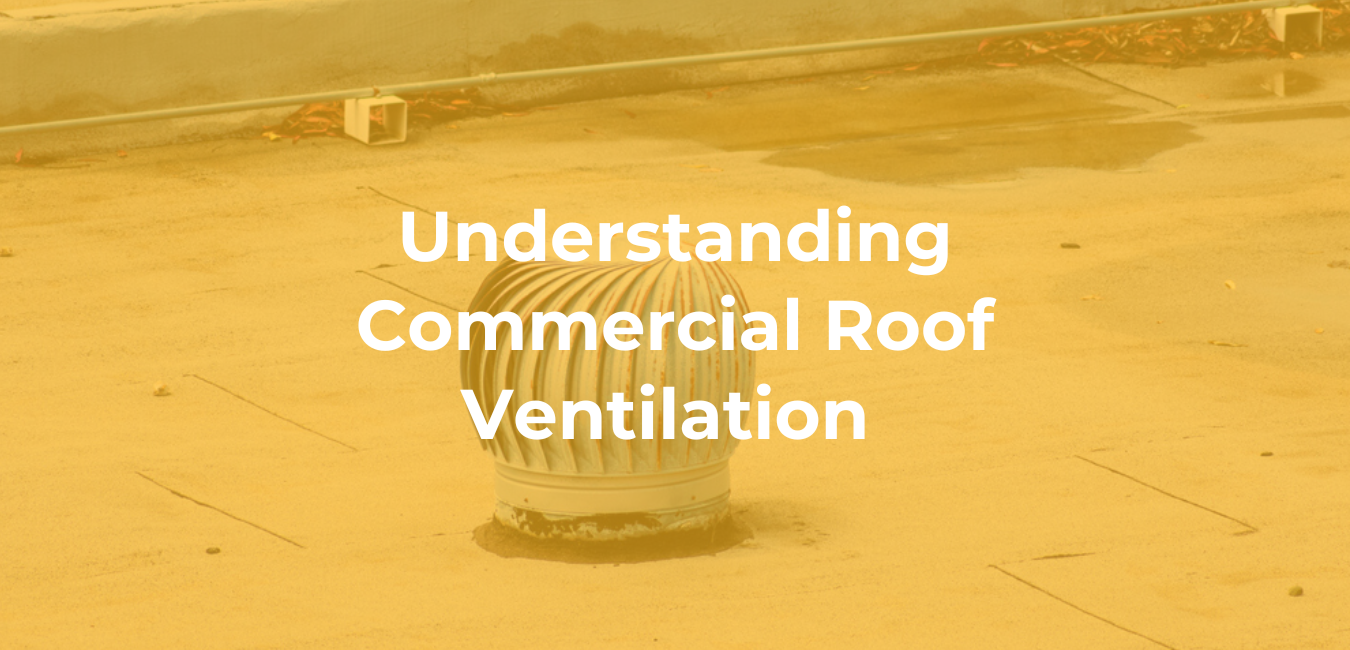When it comes to understanding commercial roof ventilation, one of the most overlooked yet essential components is proper ventilation. Ventilation is crucial for the health and longevity of a building’s roof and overall structure. Without it, a property can face a range of issues, from energy inefficiency to severe roof damage. In this blog, we’ll delve into what roof ventilation is, why it’s important, and the four common ventilation options available to help your property stay protected and efficient.
What is Roof Ventilation?
Firstly, Roof ventilation refers to the process of allowing air to flow in and out of the roof space or attic area of a building. This airflow helps regulate temperature and moisture levels within the roof, preventing issues that can arise from heat buildup or excess moisture. Proper roof ventilation ensures that the roof’s structure remains dry, cool, and free of damage caused by trapped heat or moisture.
The Consequences of Poor Ventilation
Ultimately, when ventilation is inadequate or nonexistent, properties can experience a range of issues:
- Increased Energy Costs: Without ventilation, the attic or roof space can become a hotbox, leading to higher energy costs as air conditioning systems work harder to cool the building.
- Structural Damage: Trapped moisture can weaken the building materials, leading to rot, rust, and even structural collapse over time.
- Ice Dams and Roof Leaks: Poor ventilation during the winter months can lead to ice dams, which occur when warm air in the attic causes snow to melt, then refreeze at the eaves. This can lead to leaks, roof damage, and potential water intrusion into the building.
- Health Hazards: Mold and mildew growth caused by excess moisture can lead to health issues for the building’s occupants, including respiratory problems and allergic reactions.
Four Common Types of Commercial Roof Ventilation
Now that we understand the importance of commercial roof ventilation, let’s look at four common types of roof ventilation options and how they benefit your commercial property:
1. Ridge Vents
Firstly, Ridge vents are installed along the peak of the roof, allowing hot air to escape from the attic. This type of ventilation works best on sloped roofs, where the hot air naturally rises to the top. Ridge vents are often used in combination with soffit vents to create a balanced airflow system. They are ideal for properties in warmer climates where heat buildup is a significant concern.
Benefits:
- Effectively removes warm air from the attic
- Helps to reduce the load on air conditioning systems
- Prevents heat buildup and reduces the risk of ice dams
2. Soffit Vents
Another is, Soffit vents are located along the eaves of the roof, allowing cooler air to enter the attic. This intake vent helps create a natural airflow system when paired with ridge vents. Soffit vents are an essential part of the ventilation system, ensuring that fresh air circulates through the roof space and that the hot air has a way to escape.
Benefits:
- Provides a constant flow of fresh air into the attic
- Works with ridge vents to create proper airflow
- Prevents moisture buildup by allowing air circulation
3. Power Vents
Thirdly, Power vents are electrically powered fans that assist in air circulation. These vents are often installed on flat or low-pitched roofs where passive ventilation (like ridge and soffit vents) may not be enough. Power vents are especially useful for larger commercial properties that require more ventilation power.
Benefits:
- Actively removes hot air and moisture
- Ideal for large commercial buildings or those with limited roof space
- Can be used in combination with other types of ventilation for optimal performance
4. Turbine Vents
Lastly, Turbine vents are wind-powered fans that work by harnessing the power of the wind to create airflow. They are typically installed on commercial roofs where natural ventilation is needed, but wind conditions are favorable. Turbine vents are energy-efficient because they don’t require electricity to operate.
Benefits:
- Uses wind to power the fan, reducing energy consumption
- Effective at removing hot air and moisture
- Low-maintenance and eco-friendly option
A Smart Investment
To conclude, understanding commercial roof ventilation is essential for maintaining the integrity of the building and ensuring energy efficiency. Ridge vents, soffit vents, power vents, and turbine vents each offer unique benefits that can be tailored to your property’s needs. By working with a professional roofing contractor, you can choose the right ventilation system to extend the life of your roof, reduce energy costs, and protect your building from potential damage. Proper ventilation isn’t just a nice-to-have feature—it’s a must for the long-term health of your property.
Finally, are you ready to evaluate your roof’s ventilation system? Contact Aspen Contracting today for a detailed inspection and expert recommendations tailored to your property. Call us at 877-784-ROOF or visit roofsbyaspen.com to schedule your appointment.


0 Comments